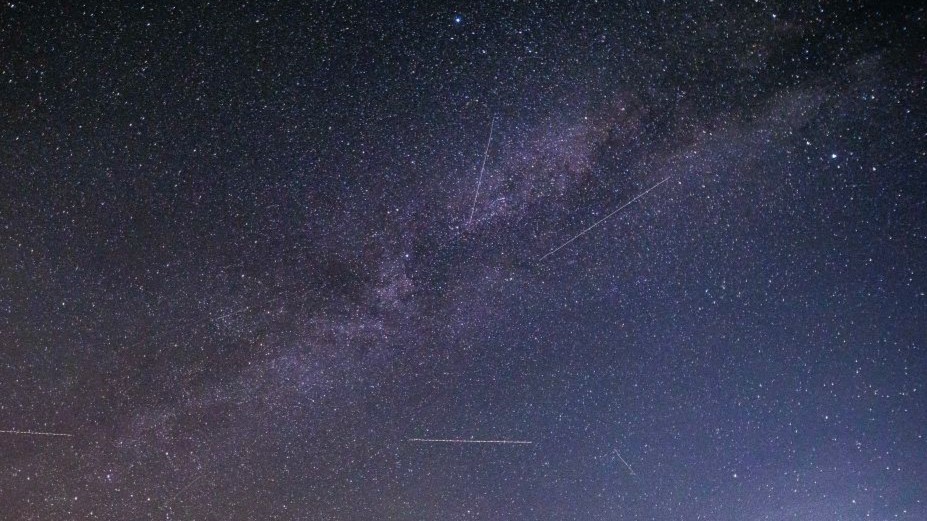
With the amount of aircraft and satellites ever-increasing, so do the chances of capturing human-made objects in photos of the night sky. There are now more than 10,000 active satellites in orbit, which means you are far more likely to capture these in your images than a meteor. Unfortunately, satellites captured on camera often look very similar to meteors, so how can we tell the difference?
Unless you've witnessed a meteor tear across the sky with your own eyes then identification can sometimes be tricky, but there are usually some clues to help us.
Related: Meteor showers 2024 — When is the next one?
How to identify satellites
Slow moving
Satellites travel far slower than meteors and most will appear in images as a solid, straight white line. A single satellite can often be visible in multiple frames while it tracks slowly across the sky.
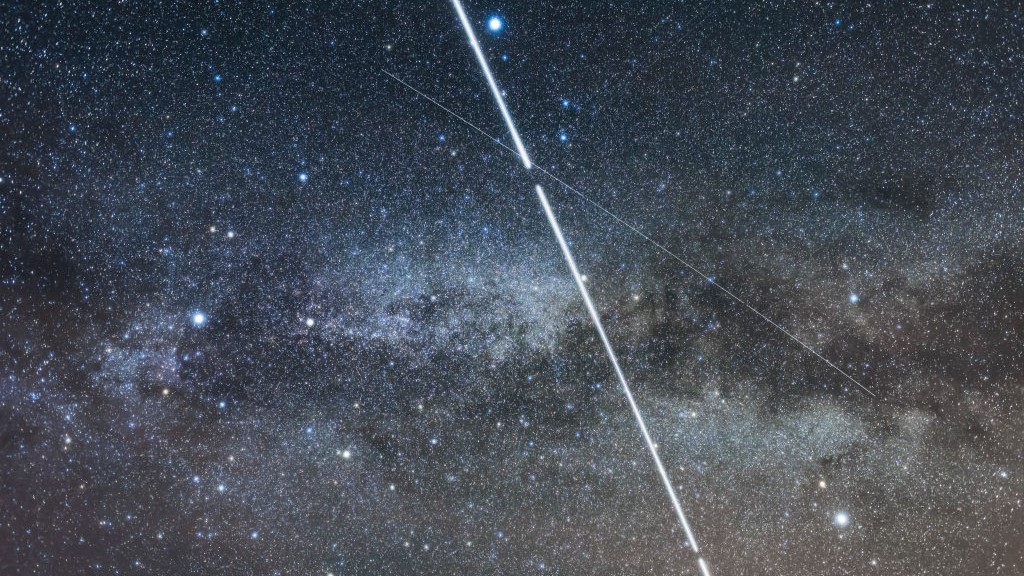
Flares
Sometimes the direct satellite reflection of the sun towards your position on Earth will cause a satellite to flare briefly. This will show as a gradual and even tapering of light at both ends of the trail with a brighter section in the middle. The International Space Station (ISS) is probably the best-known flaring satellite in the sky and will reveal itself in images as a long, tapered solid white line. The ISS can be captured across multiple frames as some passes are several minutes long.
Related: Track the ISS: How and where to see it
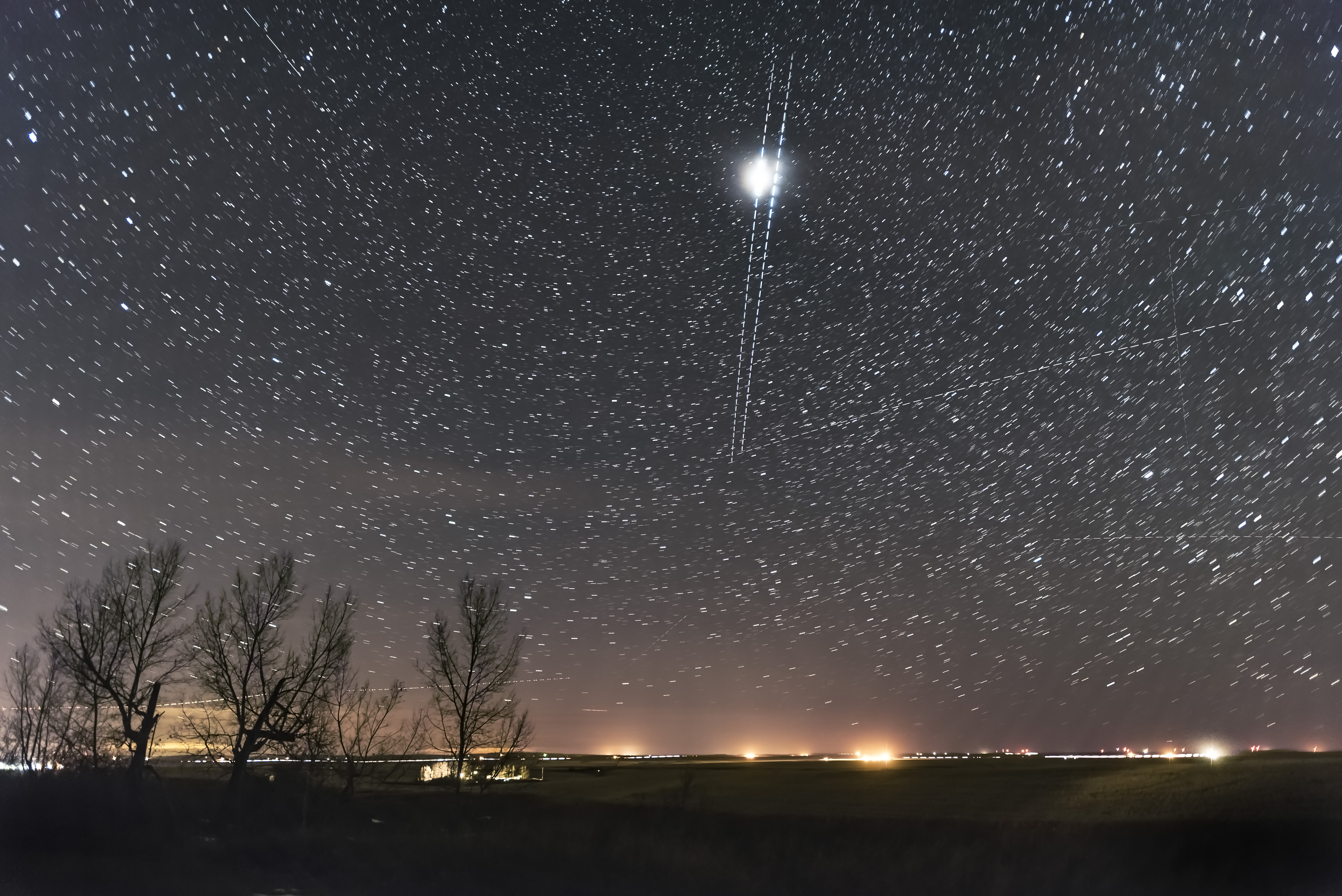
Tapering
As satellites move through our sky and into the path of Earth's shadow they will gradually become fainter until they no longer reflect sunlight, resulting in a long, tapered trail of light. The reverse is also true when satellites move out of Earth's shadow and into the path of the sun.
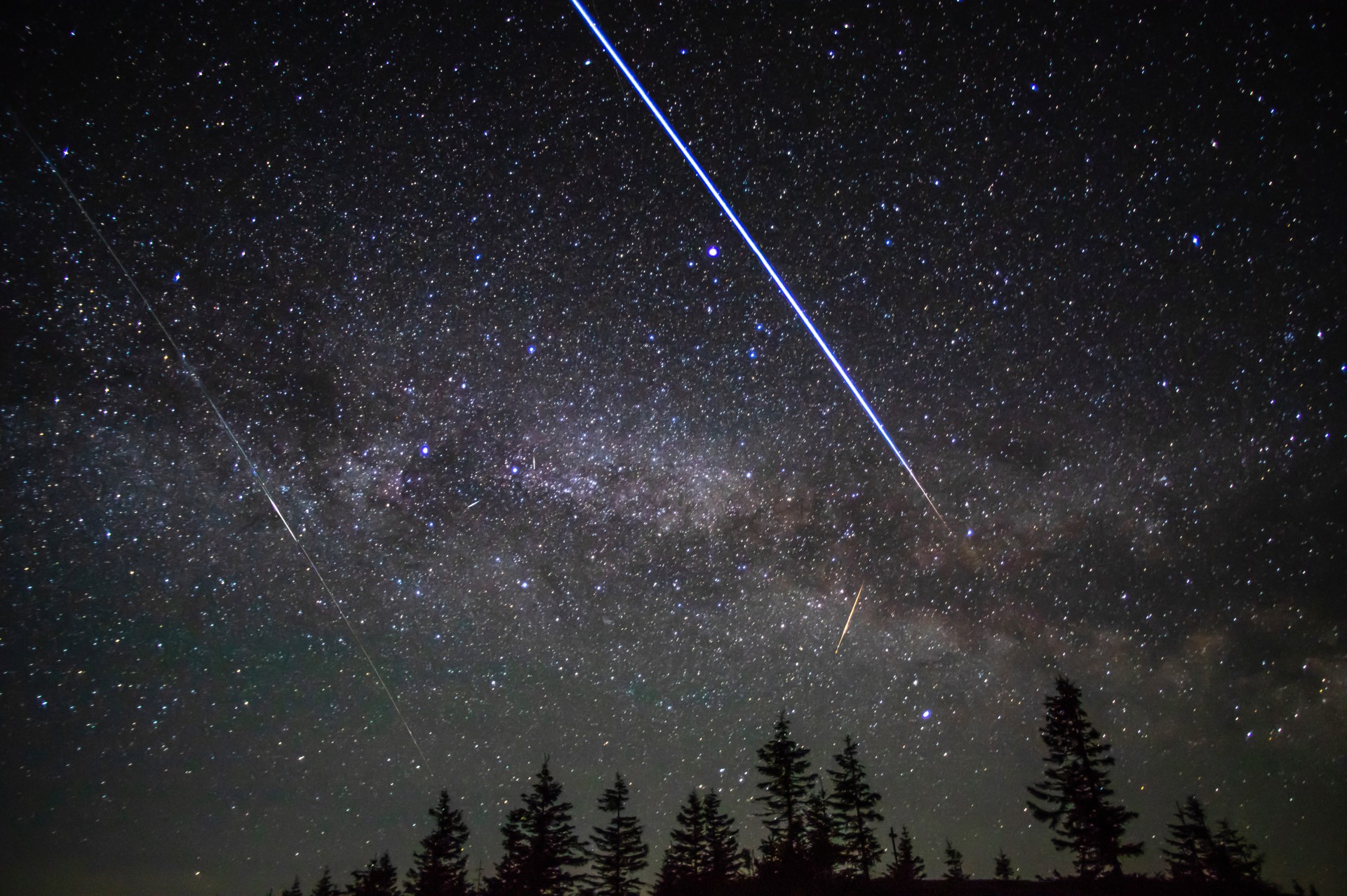
Starlink
SpaceX's Starlink satellites are much easier to identify shortly after the satellites have been deployed into orbit. These can easily be seen with the naked eye and appear as a bright train of round lights — known as a Starlink satellite train — moving across the sky, often as many as 60 at a time. In the first day or two after launch, Starlink satellites will show up in your images as a long white line, or many short white lines in succession, depending on the exposure length. As the satellites begin to separate into their own orbits, photographs will reveal Starlink passes as a series of parallel lines.
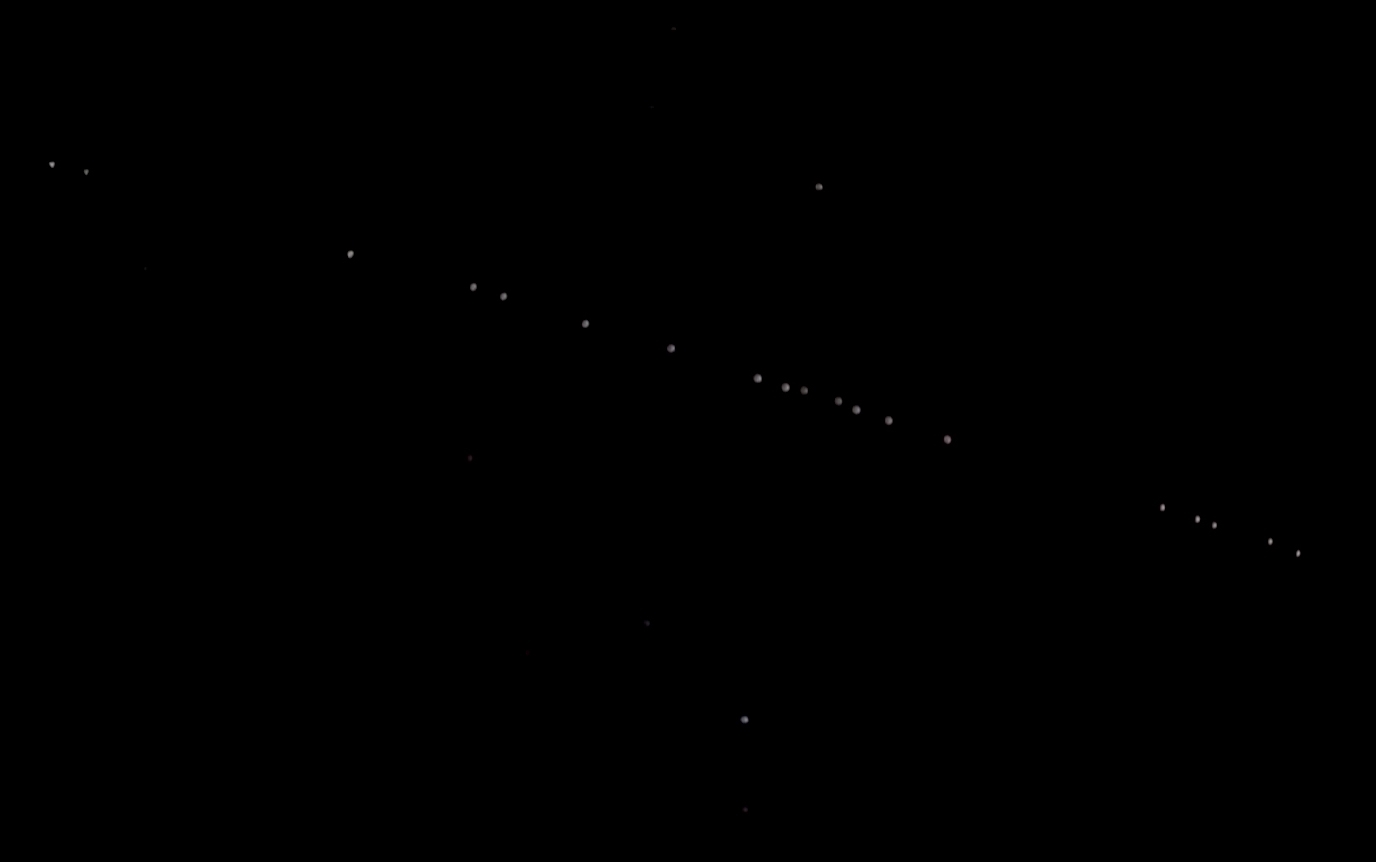
Tumbling satellites
When a malfunctioning satellite goes out of control it will spin on its own axis, reflecting the sun's light as a flare at regular intervals. In photos, these non-operational satellites will appear as a faint white line with regular and evenly-spaced changes in brightness. The frequency of the flares depends on the speed at which the satellite is spinning.

How to identify meteors
Color
Unlike satellites which reflect a white or blueish-white light, one of the biggest clues to identifying meteors in images is the presence of color, or even colors, depending on the chemical composition of the object.
Meteors will frequently burn a bright green color as they enter Earth's atmosphere, indicating the presence of magnesium. Meteors from the Perseid meteor shower often burn with a green color, while the Orionids meteor shower on the other hand can produce meteors with a yellow hue to their trails. Red, pink and blue colors may also be present.


Tapering (again!)
The shape of meteor trails will almost always appear tapered, but not usually in a uniform way. When a meteoroid enters Earth's atmosphere over 25,000mph, the object will gradually heat up before burning up completely and emitting a bright light, before tapering off quickly. Sometimes, large meteors will explode as they begin to break up and they will leave their signature as several pulses of bright light before a short taper at the end. Therefore, meteors will often exhibit asymmetric tapering, rather than an even taper of a satellite at both ends of the trail.

Speed
Meteors travel at far greater speeds than satellites. Consequently, they burn up very quickly as they enter Earth's atmosphere so they will almost always be visible in only one frame, rather than in multiple frames. Meteors will not usually be visible for more than a few seconds.
Meteor showers
Capturing a meteor with a camera is more likely when photographing a meteor shower. Meteors belonging to a particular meteor shower will appear to radiate from a specific point in the sky (the radiant), usually named after the constellation from where they appear to originate. Tracing a path backward from the trail toward a known radiant point of a meteor shower is a good indication you have captured a meteor.
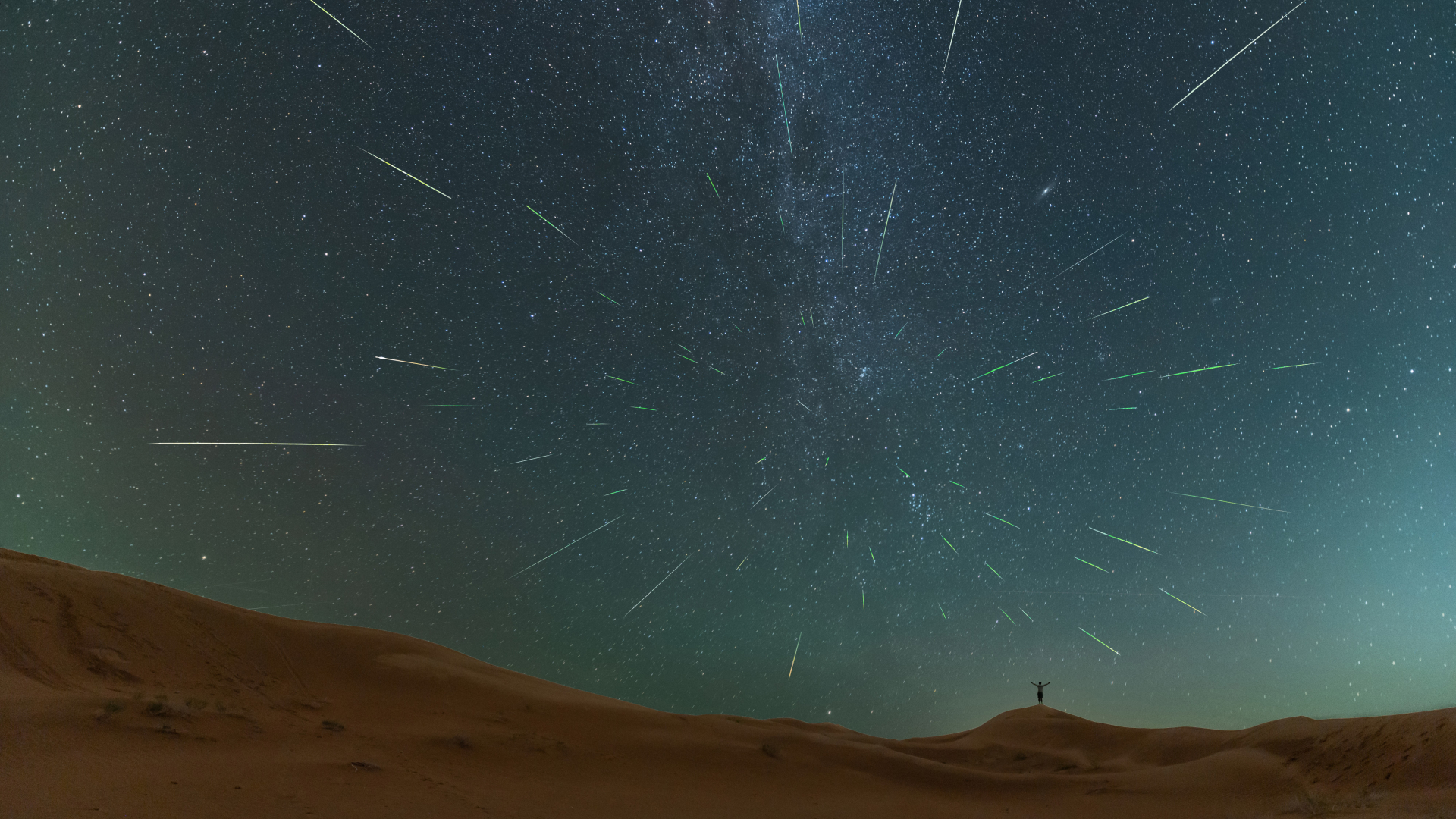
Fireballs
Fireballs are arguably the easiest meteors to identify. Meteors brighter than Venus are classed as fireballs and these bright streaks across the sky can easily be seen with the unaided eye. Exceptionally bright fireballs, or bolides, are meteors that explode with an intensely bright light, illuminating the sky and the landscape below.
If you are fortunate to capture one of these on camera, they will show as very bright streaks with one or more of the characteristics mentioned above. Subsequent frames may also reveal vapor trails immediately afterward. There's a good chance, however, that you've already identified these in person!
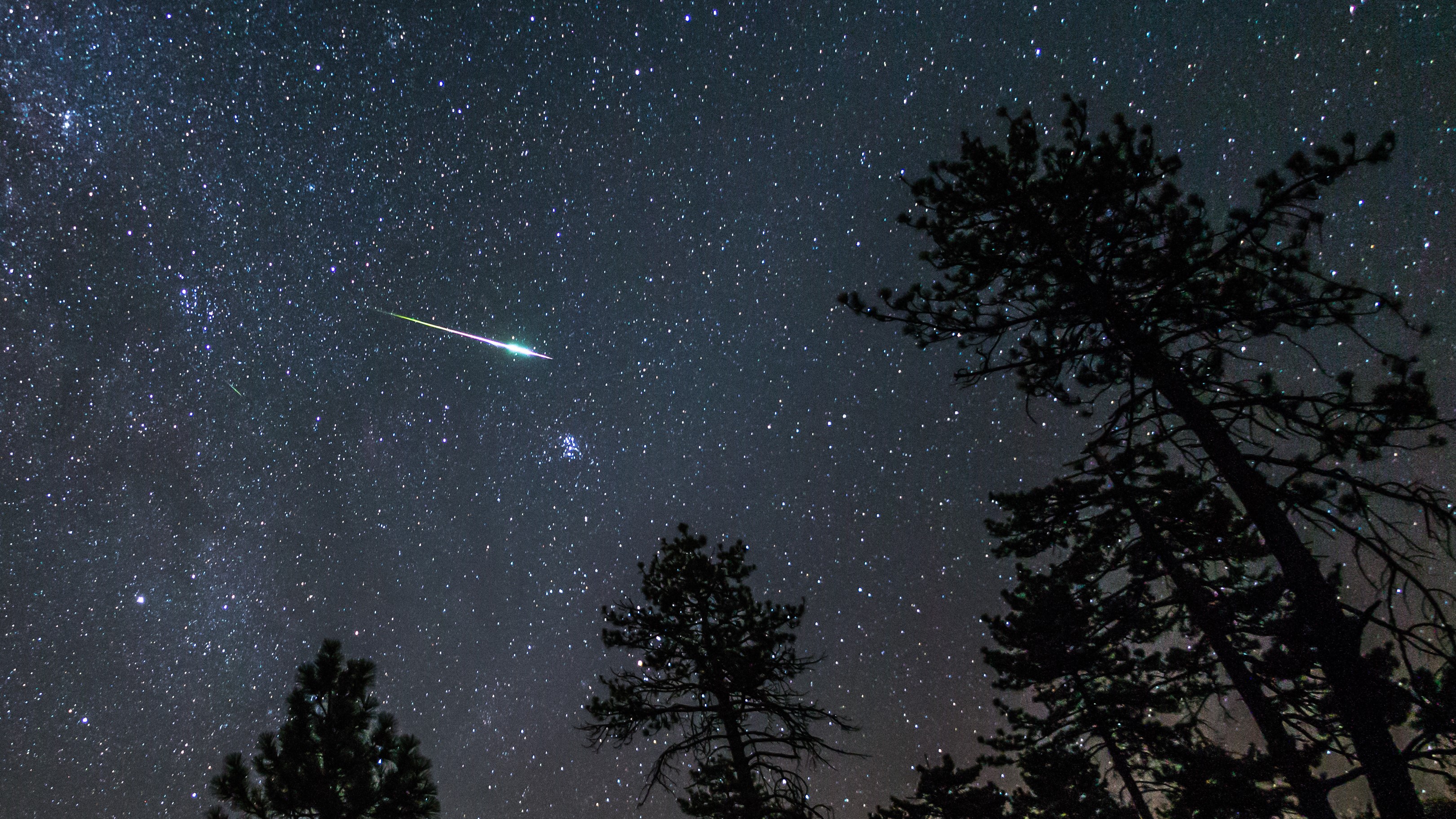
Additional help
Sometimes though, it's still very difficult to tell the difference between a satellite or meteor! Phone apps like 'Heavens Above' (Android) or 'Satellite Tracker by Star Walk' (iOS) may help to identify that mysterious streak in your images as a satellite when referenced against your time and location data.
Related: Best mobile apps to identify space stations and satellites
The size, shape, brightness and color of meteor trails are determined by several factors such as the mass of the meteoroid, chemical makeup, arrival speed and the angle of entry into the atmosphere. While this means that meteors will not always appear the same in photos, hopefully, the pointers here can help you identify if you have really captured a meteor or just one of the many, many satellites orbiting our planet!







